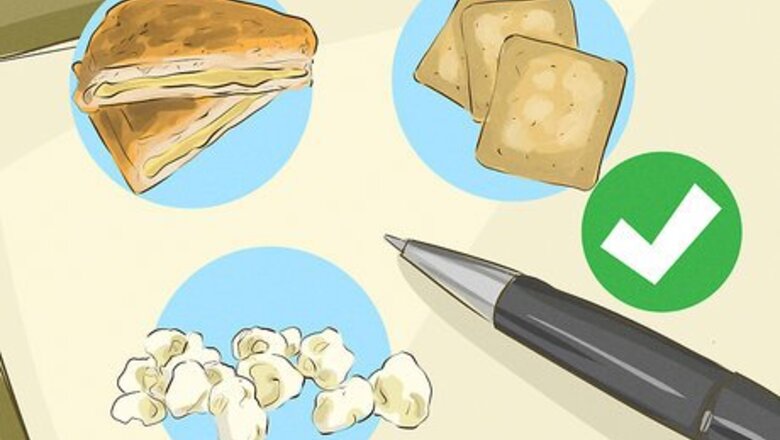
views
X
Research source
Even as a picky eater, though, there are ways you can accommodate your preferences within a healthy eating plan that can help you lose weight, control your blood pressure, or accomplish whatever health goals you may have. Start by figuring out what you do and don't like, then work to build a meal plan that focuses on your preferences but also works to include healthy foods in proper portions.
Identifying Your Food Preferences
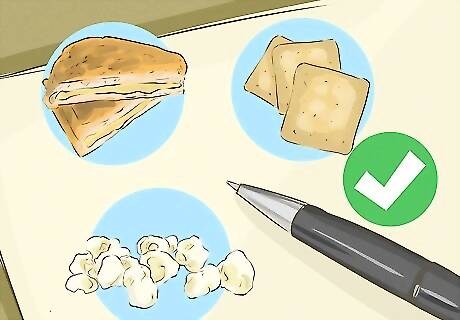
List the foods you enjoy. Be specific about the kinds of flavors and textures that appeal to you. Many picky eaters tend to find both sweet and bitter to be extreme tastes, and thus often opt for more mild foods including wheat products, cereals, and potatoes. Write down whether you prefer mild foods like pizza, french fries, and grilled cheese; or if you only like to eat foods with certain textures, such as crunchy crackers and popcorn. Determine what you gravitate towards eating on a daily basis. List all your favorite foods, and describe the flavor and texture of each of them. Then go over the foods to see what they have in common. For example, you may prefer pepperoni pizza because it is salty, crunchy, and served hot. Or you may prefer plain cheese pizza because it is cheesy, crunchy, hot, and does not contain any other flavors that are too bitter, sweet, or strong.

Note any deal breaker foods. For some picky eaters, this may include foods with a bitter flavor, like acidic fruits or green, leafy vegetables. You may also have issues with food that share a certain texture, such as mushy foods like yogurt and creamed spinach. List your deal breaker foods, and note why each one is unappealing to you. When you list deal breaker foods, be specific about the flavor or texture of the food that you dislike. For example, you may dislike bananas because they have a mushy texture, or you may have a hard time with strong vinegar flavors in foods such as ketchup, sauerkraut, or pickles. If you have any allergies to certain foods, add these to the list of deal breaker foods as well.
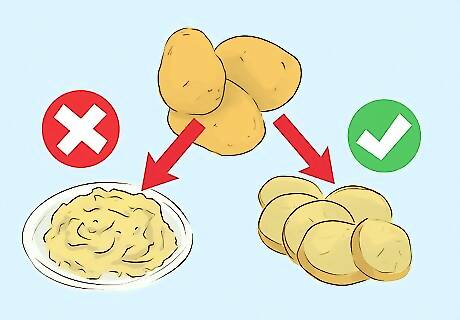
List your preferred food preparations. Sometimes, picky eaters gravitate to certain foods because they prefer a certain preparation, such as fried instead of steamed, or sliced instead of mashed. For example, you may prefer potatoes that are baked rather than mashed, or spinach that is kept fresh in a salad, instead of steamed or cooked. You may also enjoy certain foods only on their own, or only when they are combined with other foods. For example, you may dislike spinach in your pasta but be fine with eating a spinach salad on its own.
Choosing the Right Diet

Set your goals. You can't choose the right eating plan until you know what you want to achieve with your diet. Are you looking to lose weight, control your blood pressure, accommodate a medical condition, or something else? Write your goals down, as well as your reasons for wanting to achieve them. Keep a list of your goals with you. That way, when you meet with a doctor or dietitian, you can explain to them what you want to accomplish.
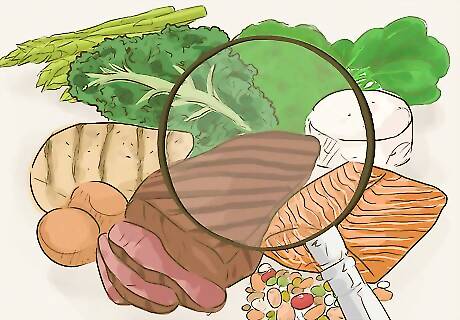
Look into different eating plan options. Fad diets such as a Paleo or Keto diet are typically no more beneficial than a holistic eating plan involving balanced and regulated caloric intake. Look for an eating plan that makes it easy for you to get a controlled, balanced diet that can accommodate your eating preferences. Research different dietary plans such as the DASH diet, the Mediterranean eating plan, or different calorie-restrictive plans. Weight loss typically occurs on any plan that creates a calorie deficit, so look for a plan that can help you track your calorie intake and still accommodate the foods you enjoy. For picky eaters, tracking calories and macronutrients may be more appealing than signing up for any form of diet plan, as this allows you more flexibility in what you eat. Generally, a balanced plan is around 30% protein, 30% fat, and 40% carbohydrates. Try eating exactly as you normally would, but cut down your portion sizes. Eating 500 less calories a day will allow you to eat the foods that you like and also lose about a pound a week. For help tracking calories and macronutrients, you can use an app that counts your calories for you simply by inputting the food and the portion size.
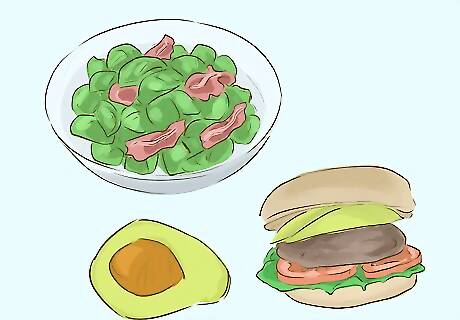
Pair food you enjoy with healthier foods. Look over your “yes” foods and think about ways you can incorporate these in dishes with different types of healthy ingredients. Go for moderate amounts of foods you enjoy, and higher amounts of foods that offer you nutritional variety such as fruits, veggies, and lean proteins. For example, crumble a strip of bacon into Brussels sprouts to create a dish that has a flavor you enjoy and lots of vitamins and nutrients. Top your burger with avocado, lettuce, and tomato to incorporate added veggies into your meal. Opt for a side salad with a light dressing instead of fries to make it even healthier. Put fresh herbs on roasted potatoes and serve them as a side with seared salmon or trout. You can also incorporate potatoes into a burrito with beans, cheese, lettuce, tomato, and onion to create a healthier, meat-free meal. Puree vegetables like spinach or mushrooms into pasta sauce. This can help add nutrients to your sauce while avoiding overwhelming textures or flavors. Pair this with a whole grain pasta to get the most out of your dish.
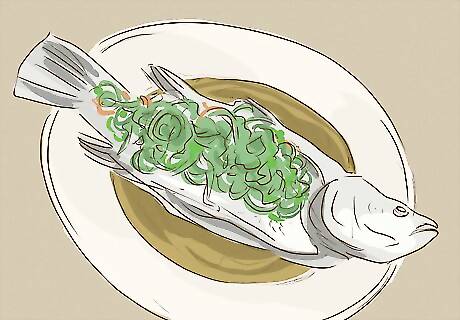
Prepare healthy foods in familiar ways. Try different preparations of foods you like and dislike in new or interesting ways. Prepare vegetables like broccoli or cauliflower by roasting or barbecuing them to add a crunchy texture and a smoky flavor. Add pureed fruits and vegetables to sauces to hide strong flavors and still get their benefits. Toss raw cauliflower or broccoli in olive oil, sea salt, and pepper. Roast the cauliflower or broccoli in the oven to create a crunchy, smoky vegetable dish. You can also make kale chips by cutting up fresh kale, sprinkling it with olive oil and salt, and baking it in the oven. Kale chips have the crunch of a potato chip, and some people enjoy them as a substitute. Steam fish and meat in the oven, wrapped in tinfoil, to give these foods a soft, flavorful interior and a crunchy exterior.
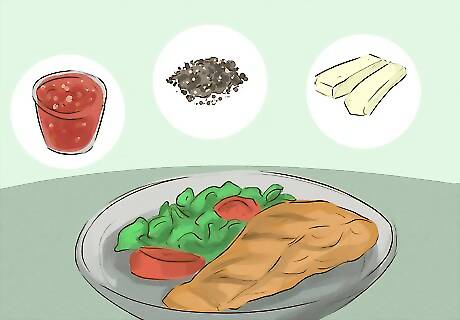
Add different flavors to healthy food you dislike. Enhance foods you may not enjoy by adding spices such as salt and pepper, garlic, and fresh herbs, especially to vegetables and meat or fish. If you do not enjoy salmon, for example, mask some of the fishy taste by making a pepper-crusted salmon with a small pat of dill butter. You can also disguise foods you don’t enjoy by adding sauces like peanut satay sauce, teriyaki sauce, and chili sauce. Just remember to look at their nutritional content first, as sauces can be high in hidden sugars and sodium.
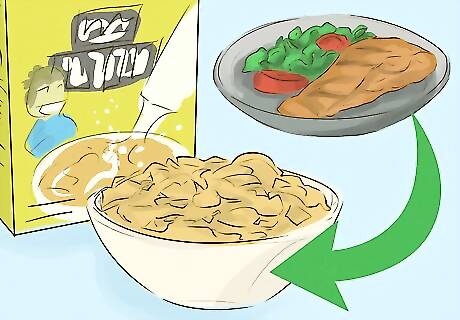
Look for micronutrients in your food. Try to get vitamins and minerals from healthier versions of food you enjoy. Often, picky eaters worry they will not get enough essential vitamins and minerals with restricted preferences. You can get several vitamins and minerals by opting for replacement foods that are not shocking to your picky palate, though. For example, if you are looking to add more vitamin D to your diet, but dislike vitamin D-rich foods like salmon, go for fortified breakfast cereal. Most milk is also fortified with vitamin D, so you can get this nutrient you need from your breakfast. Another option is to have sweet potatoes instead of bananas if you dislike mushy foods, but are looking to add potassium to your diet. In fact, a medium baked sweet potato has 543 mg of potassium, more than a medium banana, which has 422 mg.

Go for higher quality food. Some picky eaters don’t enjoy certain healthy foods because they can seem bland or stale. Look for better-quality food, especially produce, to really enjoy the flavors of healthier foods. The fresher the food is, the better it will taste. Try looking in local farmer’s markets for fresh produce, breads, and even condiments such as oils and vinegars. You can often find richer, more flavorful options than you would find in stores. Try going to a local butcher for your meat. They will be able to help you pick cuts that are tender and flavorful, and may offer fresher products than your local supermarket.
Shopping for Food

Look online for recipe ideas. Some of the best resources for healthy recipe ideas are food websites and blogs. If you are trying to find ways to prepare spinach, for example, do an online search of spinach and feta recipes or spinach and pasta recipes. Focus on pairing foods you enjoy with foods you may not like as much, but want to integrate into your diet. Some blogs even specialize in creating recipes that replicate indulgent or comfort foods using healthy ingredients. Butternut squash mac and cheese and chocolate cake made with a banana base are common examples.

Shop with a list. It’s important to always create a list of ingredients before you go to the grocery store to shop for your meals. This way, you are less likely to gravitate to only foods you enjoy eating and can pick up items that contribute to recipes and meals. Try to balance your list with equal proportions of foods you like and healthier foods. Try to look for pairings that will work together, such as mashed potatoes and lean, skinless chicken. Look up recipes in advance so that you know what ingredients you need. This can help you avoid straying and picking out unbalanced foods while you shop.

Make your own meals whenever possible. Part of trying to maintain a healthy diet when you are a picky eater is getting your hands on the ingredients and trying to create meals in your kitchen. Making your own meals also means you will be able to decide what going into each dish, and push yourself to add new ingredients or prepare ingredients in a different way. When going out to restaurants, it can be easy to fall back on standard orders with little added nutritional value because you are not in control of the preparation. Eating at home allows you to make healthier choices while still eating foods you like. If you experience a time crunch during the week that keeps you from making your own meals, you may want to designate a few hours on the weekend for meal prep, where you prepare meals for the week that simply need to be heated and served day-of.
Getting Professional Assistance

Research selective eating disorder. Many adults who have severely picky eating habits may be suffering from selective eating disorder. Most people with this disorder are embarrassed by their inability to expand their food preferences and will try to hide their issues by avoiding social events that involve food or by making excuses to avoid eating in front of others. Spitting food into a napkin or pretending to chew food are ways that people with this disorder often deal with eating in public around other people. People with this disorder may also eat less than 20 different types of foods, associate certain foods with fear or anxiety and often rejects entire food groups, such as meat or vegetables. Selective eating disorder can start when you are young and develop picky eating habits. It can then get worse as you get older and develop into an OCD like disorder. Often, people with selective eating disorder will try to eat different foods but their associations to that certain food is so negative, they cannot force themselves to eat it.

Talk to your doctor if you feel your picky eating is out of control. It’s important to speak to your physician if you find it difficult to adjust your eating habits despite trying several practical methods or solutions, like changing up your food options or preparing your food differently. Children who display picky eating habits should be encouraged to explore and try new foods. This will prevent them from developing more serious issues with food in adulthood.

Meet with a dietitian. Whether you have selective eating disorder or simply have picky preferences, working with a registered dietitian can help you find options that work for you. A dietitian can work with you to find options that are within your acceptable foods and still help you balance your diet. They can also work with you to introduce new foods in new and interesting ways so that you are not immediately off-put by them. Bring your lists of your favorite foods and your deal-breaker foods to help your dietitian understand what you do and don’t like incorporated in your meals.
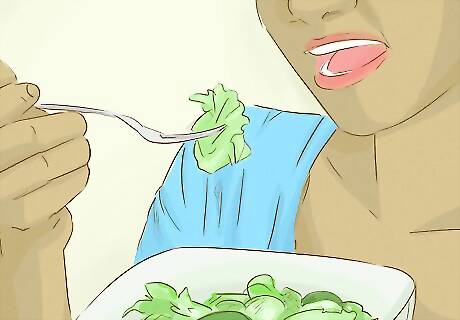
Learn to cope with your picky food habits. There is no clear cure for picky eating, other than to practice coping mechanisms to try to maintain a healthy diet. If you are diagnosed with selective eating disorder, you may consider joining an in-person or online support group to discuss ways to cope with this disorder. Your doctor may also recommend working with a counselor or therapist to help you recognize and respond to the root causes of your selective eating disorder. If your doctor recommends therapy and it is within your means to go, schedule an appointment as soon as possible.




















Comments
0 comment